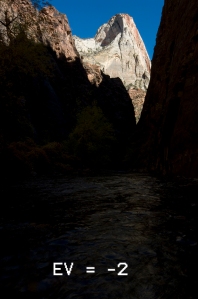When it is a 32-bit HDR file and not a tone-mapped file.
In my last post I attempted an apples-to-apples comparison of tone-mapped output from several High Dynamic Range (HDR) applications. The goal was to utilize the ‘default’ tone-mapping setting in each of the apps and present those outputs. I got it about ?? right.
Both Photomatix Pro and HDR Essentials do in fact have default settings so I believe those comparisons are valid. However, in the case of Photoshop’s Merge to HDR tool and Unified Color’s PhotoStudio 2, neither really have a “default” setting for tonemapping. In fact the images I output from those programs were essentially tiff conversions of the 32-bit HDR file. Most monitors cannot adequately display those files so they don’t look quite right. In the case of PhotoStudio 2 after merging the files you are presented with the HDR file and expected to begin your dynamic-range editing there either manually with the various controls or by applying pre-sets (or ‘recipes’) if you have any loaded. With the Merge to HDR function in Photoshop, once the 32-bit file is created you may output it tone-mapped in a number of ways, none of which can really be considered ‘default.’
Both of the above models are different than the mechanisms either Photomatix or HDR Essentials utilize in preparing your file for output. In Photomatix, after merging the files you are presented with a 32-bit HDR image that you may save (as a Radiance file for instance) before selecting the Tonemapping button which takes you to that section of the workflow where default values (as set by the developer) may be applied in either the Details Enhancer or Tone Compressor modes. HDR Essentials does not show you the 32-bit file (though you may save it as a Radiance file and open it in Photoshop) but instead jumps you directly to the default, ‘factory-settings’ for tone-mapping as specified in preferences.
A more true comparison would have been to show all of the HDR (32-bit) file outputs but since our monitors can’t display them properly, nothing of value would have been gained from that. As it was, showing default tone-mapped files aside HDR files was confusing at best. To correct this (to some degree anyway) I have output a tone-mapped file from both Photoshop (using the Local Adaptation method) and PhotoStudio (with various local and global adjustments manually applied). Neither of these files are meant to represent the full capabilities of the applications or methodologies applied. But instead I include them here to show you how far from a 32-bit HDR file you can go via their various tone-mapping schemes and tools. Unified Color’s product in particular has very granular controls to permit potentially endless fine-tuning.
In the end, the best bet is download and try the various apps for yourself. Use the same set of files and see how easy and how long it is before you get output you are satisfied with. Time, interface ease, and final output should all be calculated into your final application decision.
















